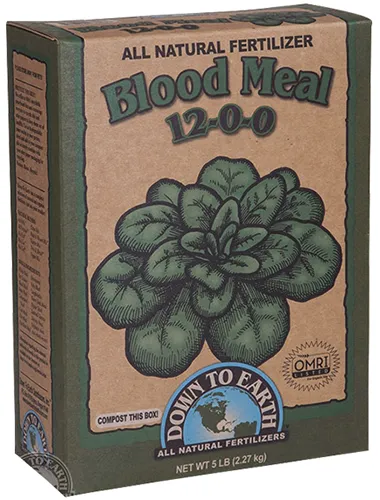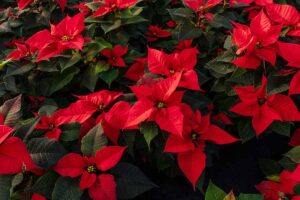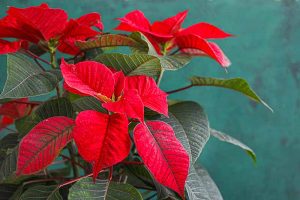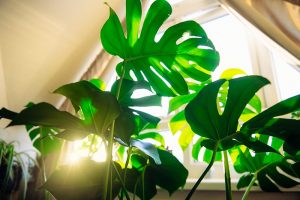I’m not sure about the name, as I have somewhat of an aversion to arachnids, but I know spider plants themselves are stellar.
Their strappy, often striped mounds of leaves are different from so many other houseplants.
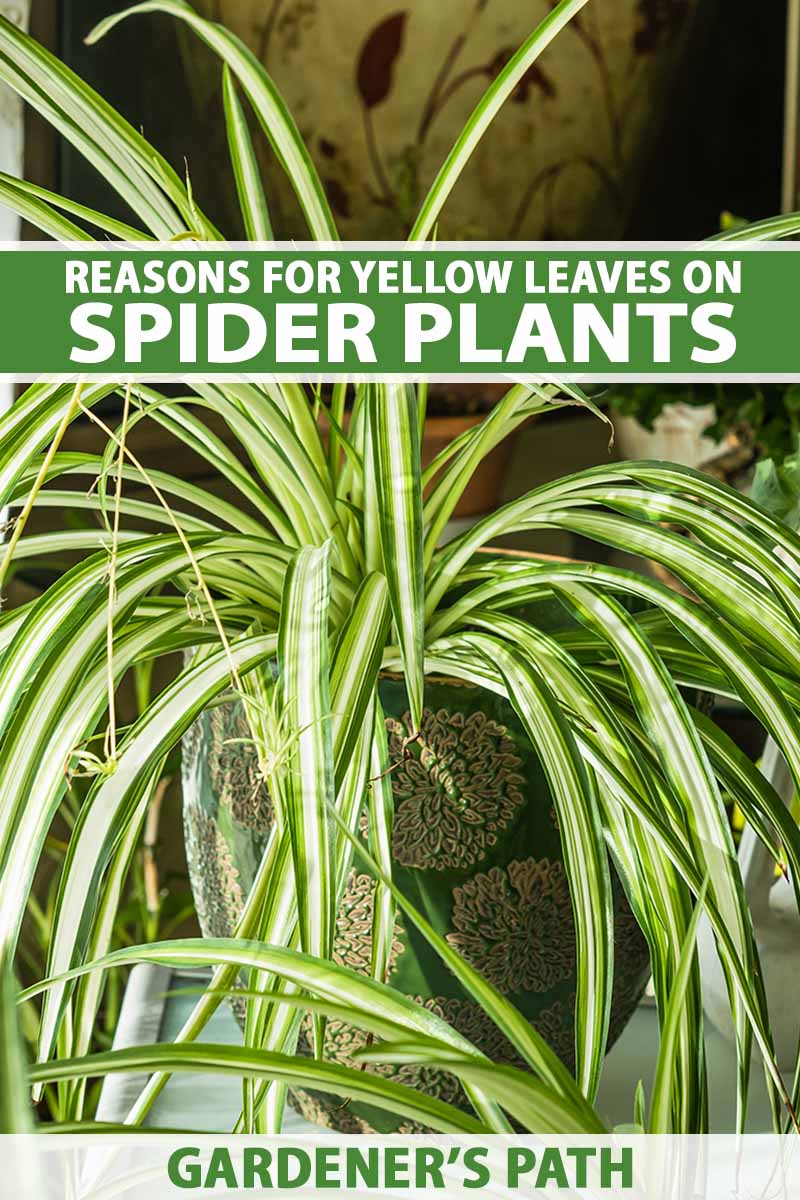
We link to vendors to help you find relevant products. If you buy from one of our links, we may earn a commission.
But it’s no good when those leaves start looking a bit shabby.
Since plants can’t talk, they tell us that something is wrong through their leaves.
And when the leaves on your specimen turn yellow, you need to figure out why it’s happening and take swift action to remedy the problem.
There are seven common causes of leaf yellowing in spider plants. Are you ready to find some solutions? Here’s a quick preview of everything we’ll cover up ahead:
Leaf Yellowing in Spider Plants: 7 Common Causes
To begin, it’s important to make sure we know what we’re looking at. There are two kinds of yellowing leaves:
The first are brighter yellow, dry, and crisp leaves. The second are pale, mushy ones. Pay attention to the difference – being able to discern between the two will help you narrow down the cause.
Some spider plants naturally have yellow stripes or variegation, but that’s not the kind of coloring we’re talking about in this guide.
Think you’ve spotted the type of color change that signals a problem? Let’s take a closer look!
1. Age
As they age, the older leaves at the base will turn yellow, brown, and then die. These leaves tend to be brighter in color and dry.
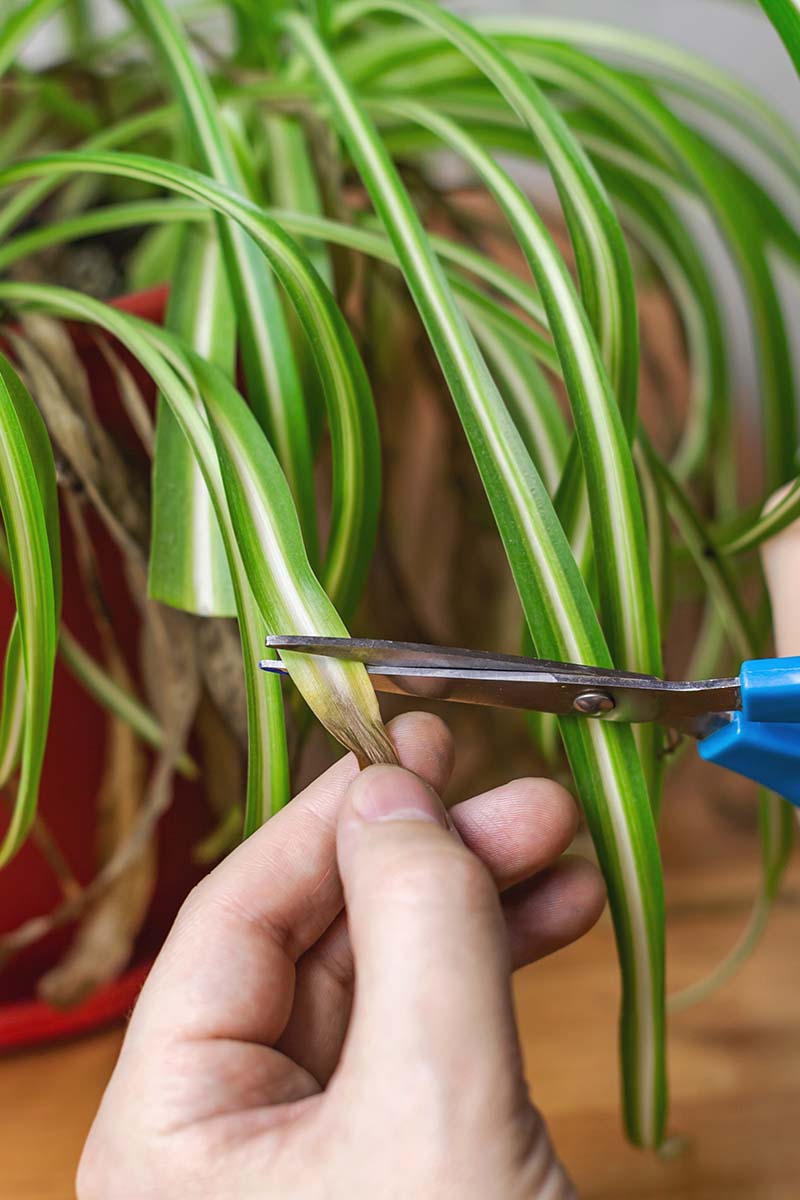
If no other leaves toward the interior of the plant are turning yellow, and as long as you don’t encounter a large number of dying leaves, this is nothing to worry about. Just trim them off.
If you do see a large number of dying leaves and these are spread throughout the plant, it’s probably not due to age. Continue reading to figure out what the issue is.
2. Iron Deficiency
Insufficient iron uptake is one of the most frequently seen nutrient deficiencies in all types of cultivated plants.
Leaf chlorosis is its most distinctive symptom. This is when the leaves turn yellow but the veins stay green. Sometimes, the leaves might even turn white.
Young leaves will be intensely yellow or even white, and growth will be stunted significantly. The leaves will generally have a normal texture, neither dry nor soggy.
If you’ve maintained a regular repotting and fertilizing routine, this shouldn’t be a problem.
But if you’ve neglected those routine chores, you might need to add some iron – in addition to being more diligent in the future!
The best way to do this is to sprinkle blood meal onto the soil.
Down to Earth has a great option available, and it comes in a compostable box in various sizes which you can purchase at Arbico Organics.
Side dress the pot or mix with water for application, following the manufacturer’s directions. Then, be sure to fertilize regularly, but not too often. We’ll discuss that shortly.
3. Overexposure
If your specimen is in direct sunlight and it’s turning yellow, it’s likely receiving too much sun.
This is one of those instances where the leaves will be dry, or at least normal in texture, and yellow. If they’re mushy and pale, overexposure isn’t the problem.
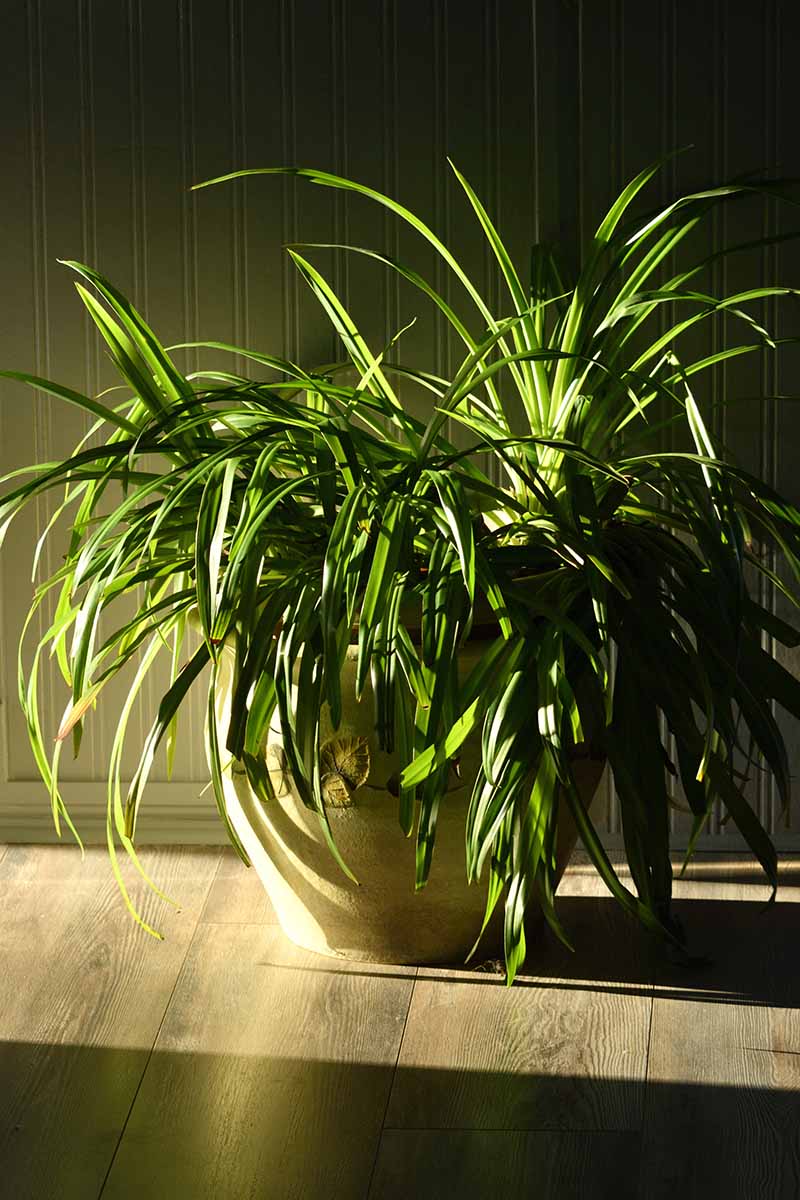
This is an excellent problem to have because it can be solved easily by moving the pot further away from the light source.
The leaves that have already turned won’t recover, but you can clip them off. Healthy new growth will come in with the appropriate color.
4. Over-Fertilizing
One of the most fabulous things about spider plants is that they don’t require much maintenance, and that includes feeding.
It’s super easy to get into the habit of adding some fertilizer to your watering can each time you water.
While this works great for some houseplants, it’s not so good for less hungry plants that aren’t heavy feeders, such as spider plants.
Don’t feed at all during the winter, and stick to a schedule of just once every other month with an all-purpose liquid fertilizer.
If you go with something extremely mild, with NPK numbers in the single digits, feed a bit more often – once a month should do it.
Dr. Earth Pump & Grow is nice and mild with an NPK of 1-1-1, so you won’t run the risk of burning your plants.
Plus, you don’t have to mix it with water if you apply it directly to the soil, though you can opt to put it in your watering can if you like. I love a product that makes life easier.
If you want to go the easy route, bring home a 16-ounce container from Arbico Organics.
Learn more about fertilizing spider plants here.
5. Pests
If the foliage is crisp and dry, and you know the water and light exposure is right, pests are the next thing to look for.
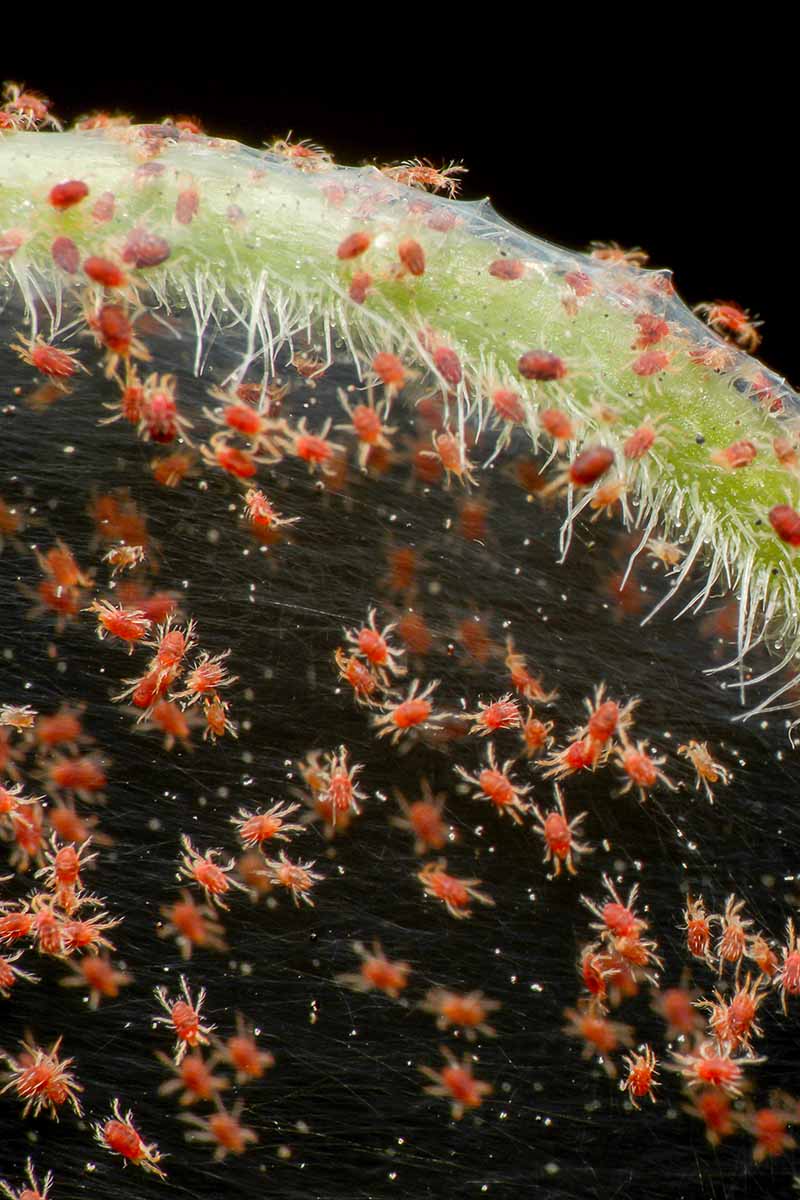
Many common pests feed on the sap of plants, drawing it out by piercing the flesh and sucking. This drains the foliage of nutrients and moisture, causing it to turn a stippled yellow.
Watch for aphids, mealybugs, and spider mites. All of these pests are very common on houseplants. And all of them are usually pretty easy to deal with, using neem oil.
If you don’t already have neem oil in your gardening toolkit, you should remedy that ASAP. This stuff is pretty useful!
Arbico Organics carries Bonide brand neem oil in quart- or gallon-size ready-to-use bottles, or pint-size concentrate.
6. Too Much Water
I’ll admit that I’m guilty of this now and then. I get into a routine and water all my houseplants at the same time each week.
But you really should take the extra step and stick your finger in the soil before watering.
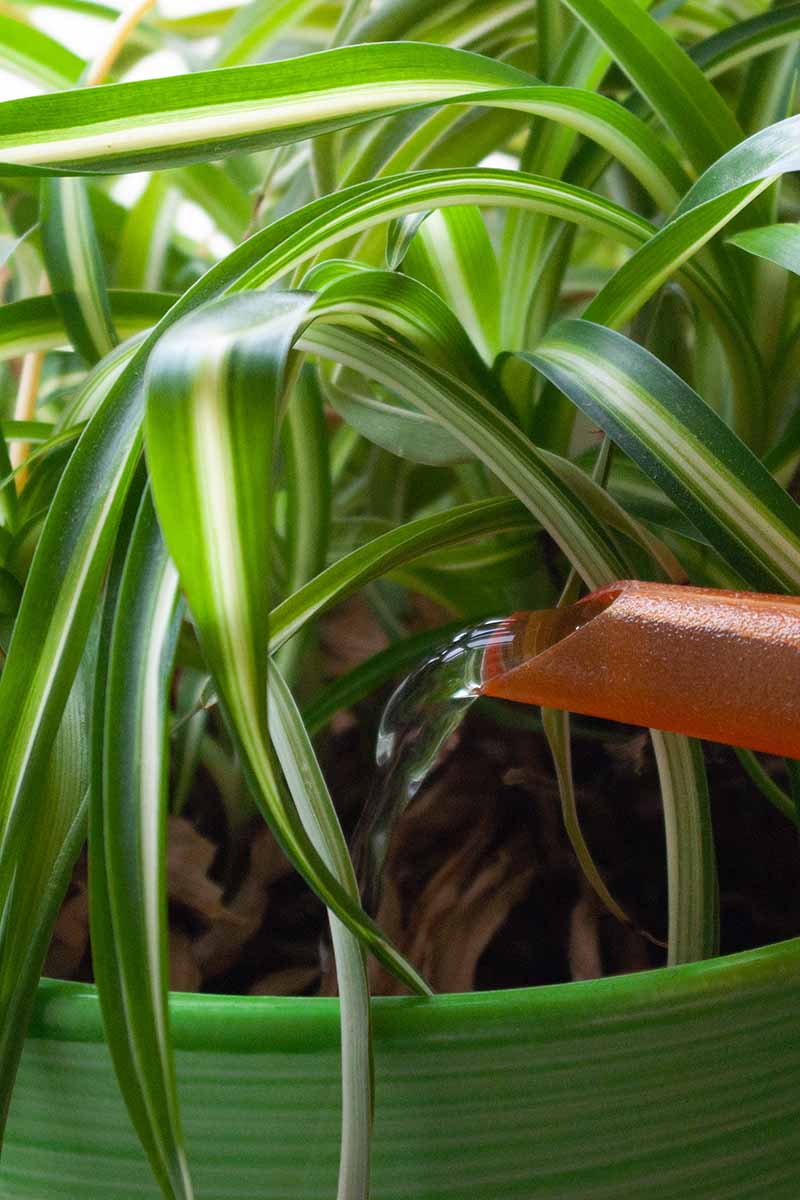
Are you doing this as a habit already? If not, you risk overwatering the species that don’t need as much moisture, like spider plants.
These plants can actually grow in water without any additional substrate, which leads some gardeners to assume they can handle a whole lot of moisture.
But they actually do best if they’re allowed to dry out a little in between watering when planted in containers filled with potting soil.
The problem doesn’t just stem from providing water too often. It can also be caused by a container with poor drainage, and it’s common in specimens that are root bound.
If your spider plant is turning yellow and the leaves are a little soft and wilted, you should definitely check the moisture in your soil. Does it feel any wetter than a well-wrung-out sponge?
If it does, it’s too wet. It should only feel that moist if you just watered your plant.
Let the soil dry out enough that it feels dry throughout the entire top inch of soil, at a minimum.
Even better, you can use a moisture meter and only water when the soil is at least 50 percent dry – but 75 percent is even better.
7. Underwatering
I have no scientific evidence to back this up, but I think watering appropriately is the hardest part of growing houseplants.
Maybe that’s just a testament to my own experience, but I was always either overwatering or underwatering my plants – until I figured out how to test the soil with my finger or to use a moisture meter.
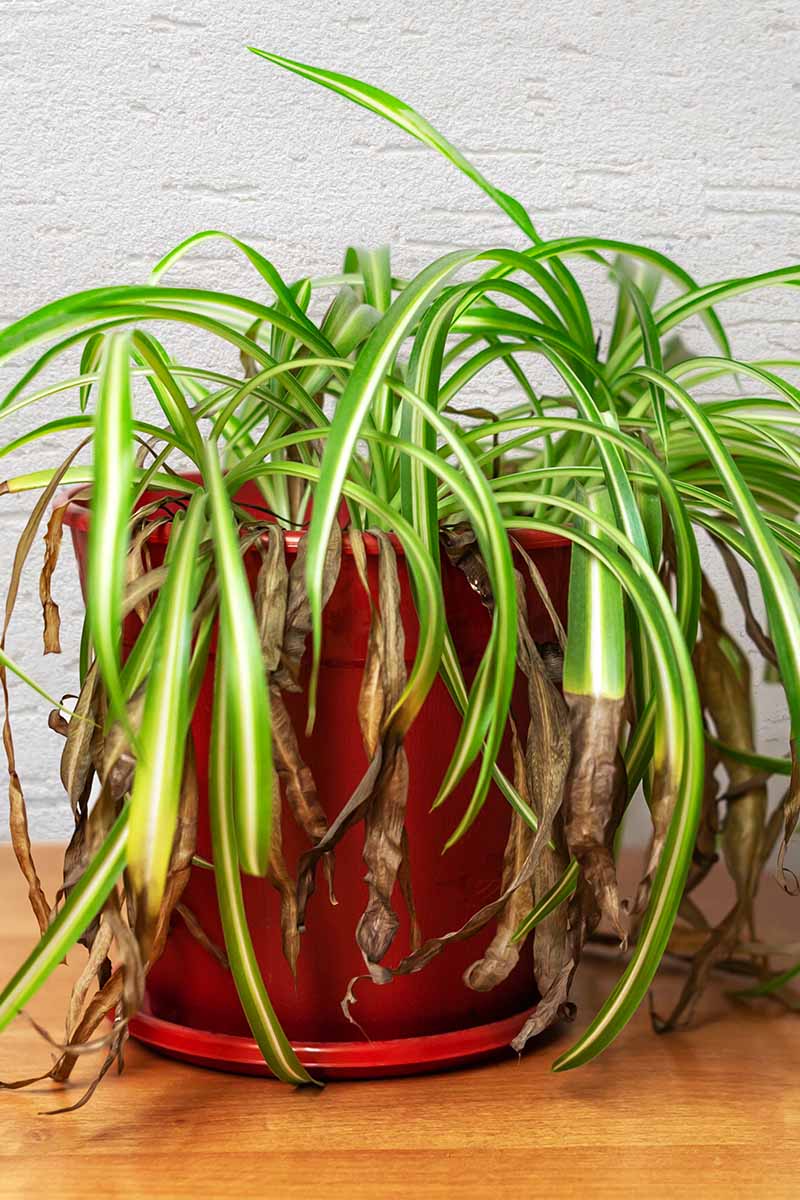
If you’re underwatering, the leaves will start to turn brown and yellow, but they’ll be crisp rather than pale and soft. The leaves will start turning crispy at the tips before moving down the rest of the leaf.
In this case, it’s not just the leaves that will give you a heads up. Look at the soil. If it’s pulling away from the side of the pot, it needs more moisture.
You don’t want to skip watering them altogether, but it’s best to err on the side of giving too little rather than too much water. These plants tolerate drought better than sogginess.
Wait until the soil is dry to your second knuckle before watering again. The soil should be three-quarters dry, or about 75 percent.
So it won’t quite be totally dry before you water again, but it shouldn’t have much moisture left.
Your Other Houseplants Will Be Green with Envy
On behalf of my fellow arachnophobes, can we rethink the name here?
Is there something cuter we could call our spider plants? Maybe something that reflects their stalwart and sturdy nature, or better captures the appearance of those adorable plantlets?
At least the term “spiderette” is less ick-inducing…
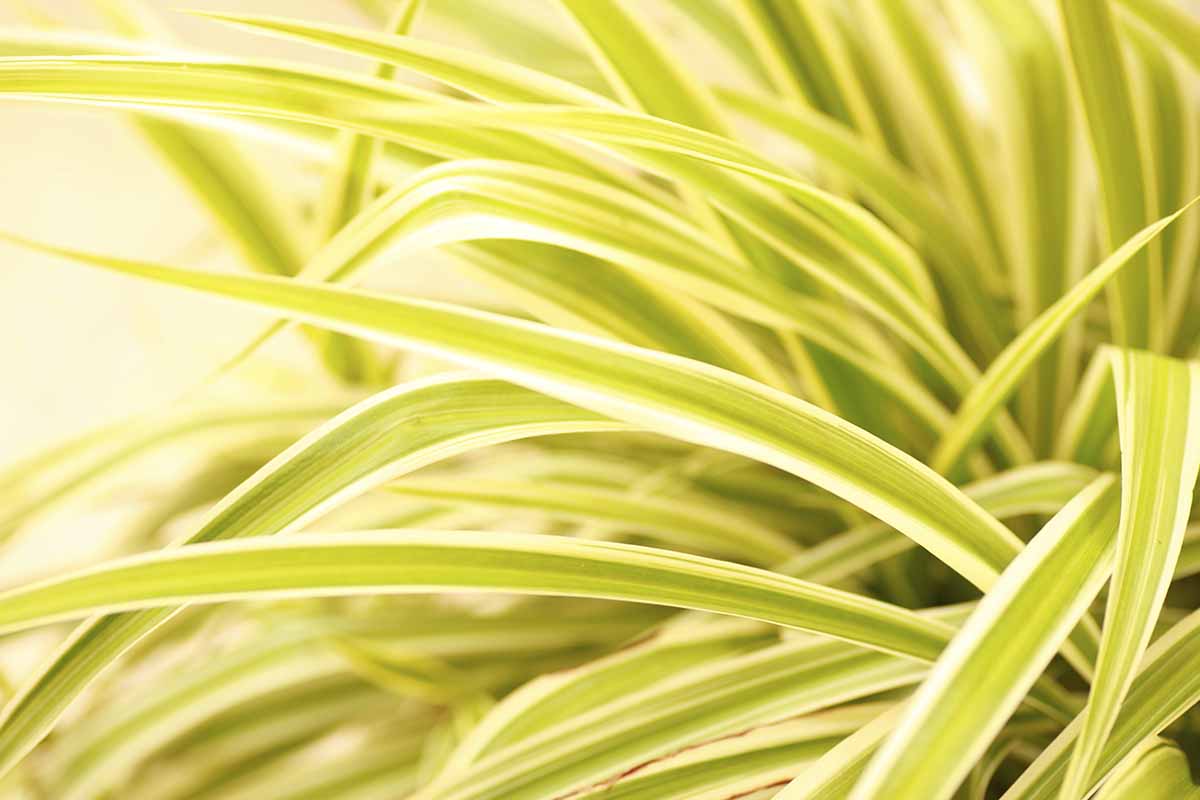
Do you have any ideas for a better name? Or, back to the topic here, are you still having trouble with your plant? Let us know, either way, in the comments!
And in the meantime, here are a few more spider plant guides to help you on your journey:
